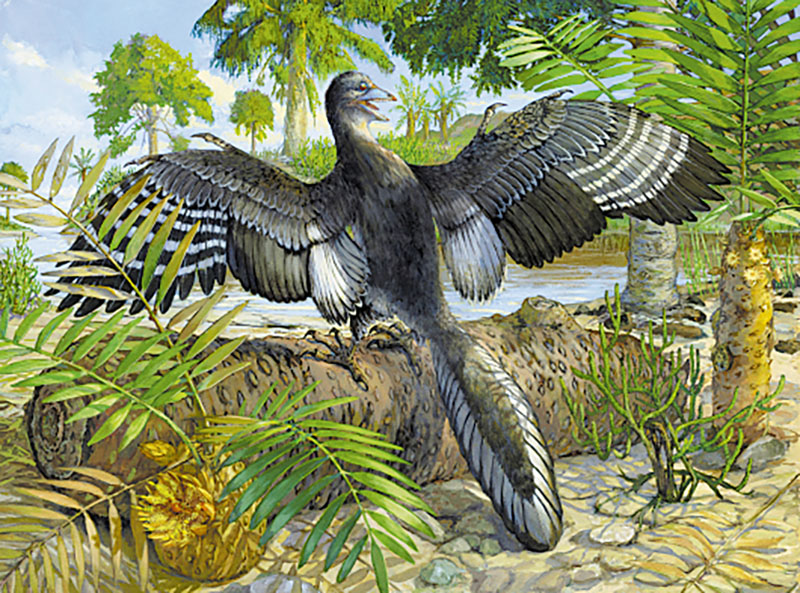
Researchers from China and the United States have shed new light on the ancient evolutionary transition from dinosaurs to birds, thanks to a remarkably well-preserved specimen of Archaeopteryx.
The study, jointly led by Hu Han of the Institute of Vertebrate Paleontology and Paleoanthropology at the Chinese Academy of Sciences and Jingmai O'Connor of the Field Museum of Natural History in Chicago, was published this month in the journal Nature.
Archaeopteryx, widely recognized as the most primitive known bird from the Late Jurassic period around 150 million years ago, is considered a pivotal species in paleontology for displaying features of both birds and non-avian dinosaurs.
READ MORE: Jurassic bird fossils found in Fujian rewrite history of avian evolution
Like all 13 previously known Archaeopteryx fossils, the newly reported one was found in limestone deposits near Solnhofen, Germany. The pigeon-sized specimen, collected by the Field Museum in 2022, is the smallest and best-preserved discovered so far.
"The specimen in Chicago is exceptionally intact, with only a single digit missing," Hu said.
"This has laid a solid foundation for the first successful complete 3D reconstruction of this bird, especially of the skull, a feat that previous studies failed to achieve due to factors such as specimen preservation and technological limitations," she said. "This breakthrough has unveiled previously unknown anatomical features and provided a crucial 3D model for future studies."
Hu said the success of this study stemmed from close collaboration within the China-US research team. O'Connor previously worked in China for nearly a decade, helping foster cross-border scientific ties.
Using high-resolution CT scans and 3D reconstruction, the study revealed an almost entirely intact skull, including the palatal region. The researchers found it to be intermediate between that of troodontids — a group of bird-like theropod dinosaurs — and more derived Cretaceous birds.
"This represents a critical evolutionary stage in the transition from the rigid, immobile skulls of nonavian theropods to the lighter, more kinetic skulls of birds," Hu said.
The study also identified preserved soft tissues, including toe pads shaped similarly to those of modern ground-foraging birds, suggesting Archaeopteryx was adapted for walking.
"This indicates that it may have had a mixed lifestyle — spending some of the time in trees and some on the ground — contrasting with previous inferences about the habits of this creature," Hu said.
In addition, the study provided key insights into the wing structure of Archaeopteryx and its relevance to the origin of bird flight.
"For the first time, we discovered tertials in Archaeopteryx," Hu said. "Tertials are flight feathers that help fill the gap between the wing and the body. They play a crucial role in maintaining the wing surface, reducing air resistance and improving flight efficiency."
ALSO READ: 90-mln-year-old fossils belong to new dinosaur
While the newly discovered tertials are considered a significant factor in the bird's flight ability, further research is needed to confirm the findings, she said. Tertials are not present in any known fossil of birdlike dinosaurs, making this discovery a noteworthy development in understanding how anatomical features evolved in response to environmental demands.
Since its first fossil was unearthed in 1861 — just two years after Charles Darwin published On the Origin of Species — Archaeopteryx has long been considered key evidence supporting the theory of evolution.
Building on the 3D reconstruction and descriptive work, the team plans to continue its research with quantitative studies on skull mechanics and wing aerodynamics in Archaeopteryx and other early birds, further exploring the evolutionary shift from dinosaurs to birds.
Contact the writer at limenghan@chinadaily.com.cn


